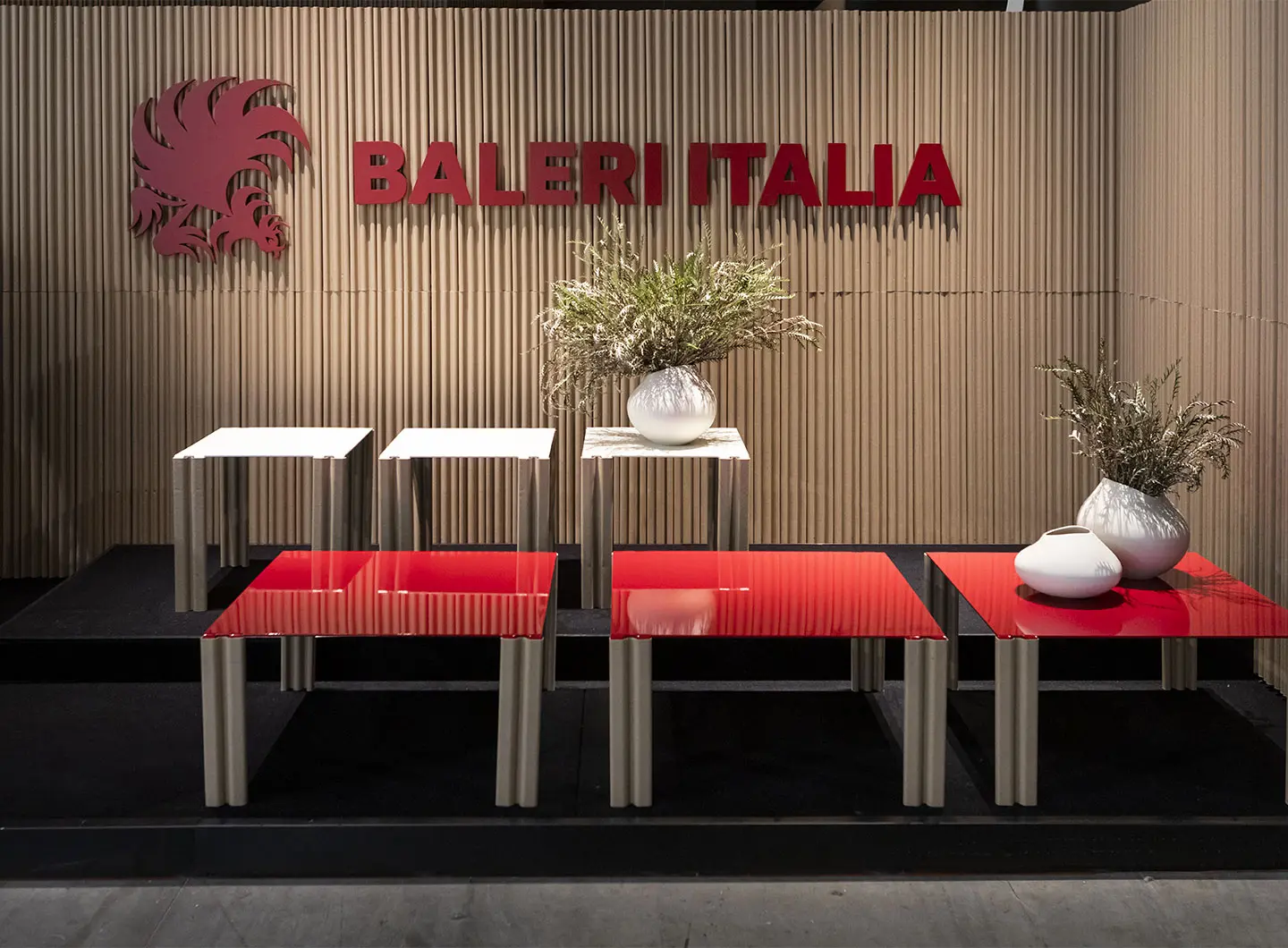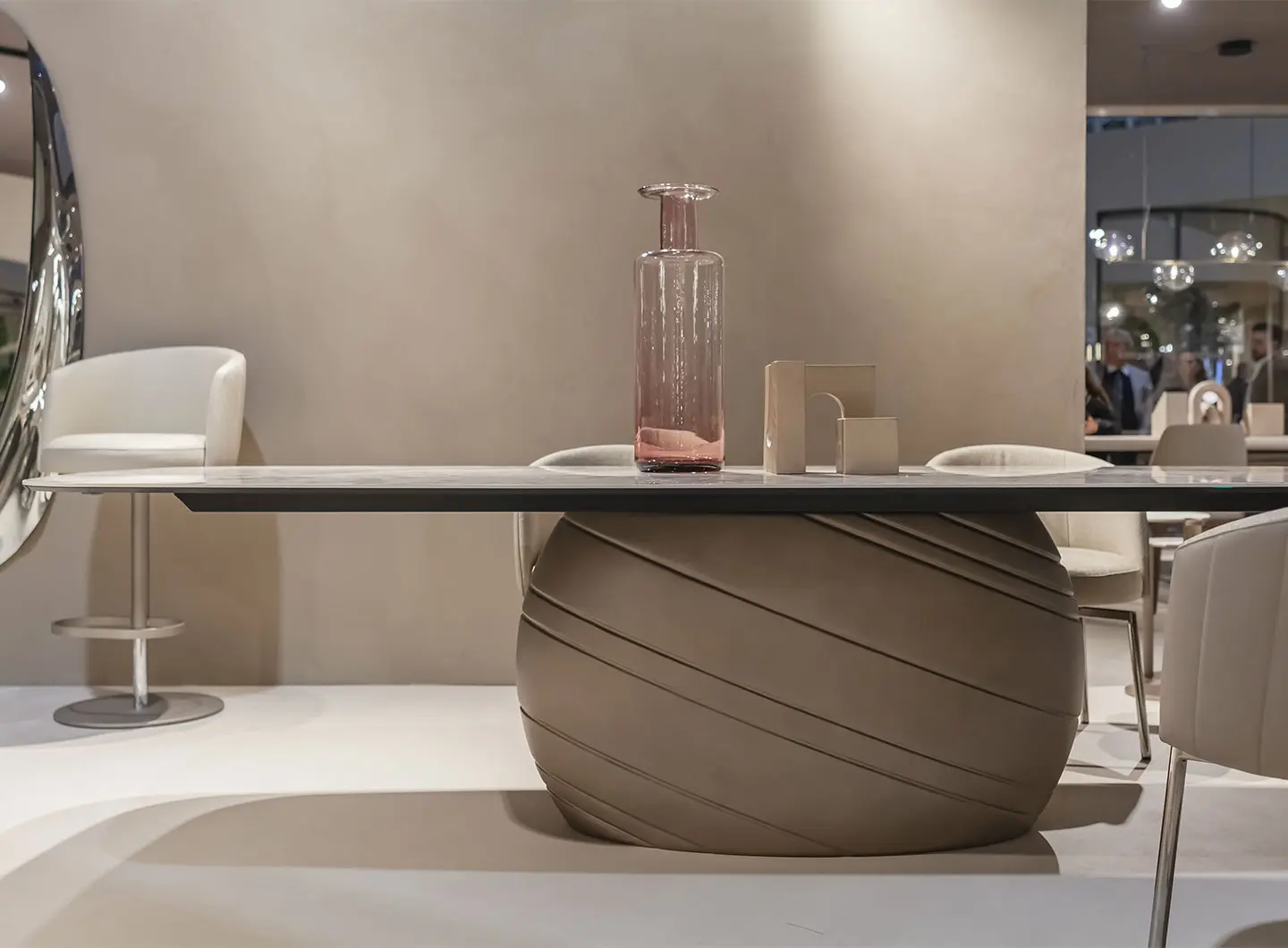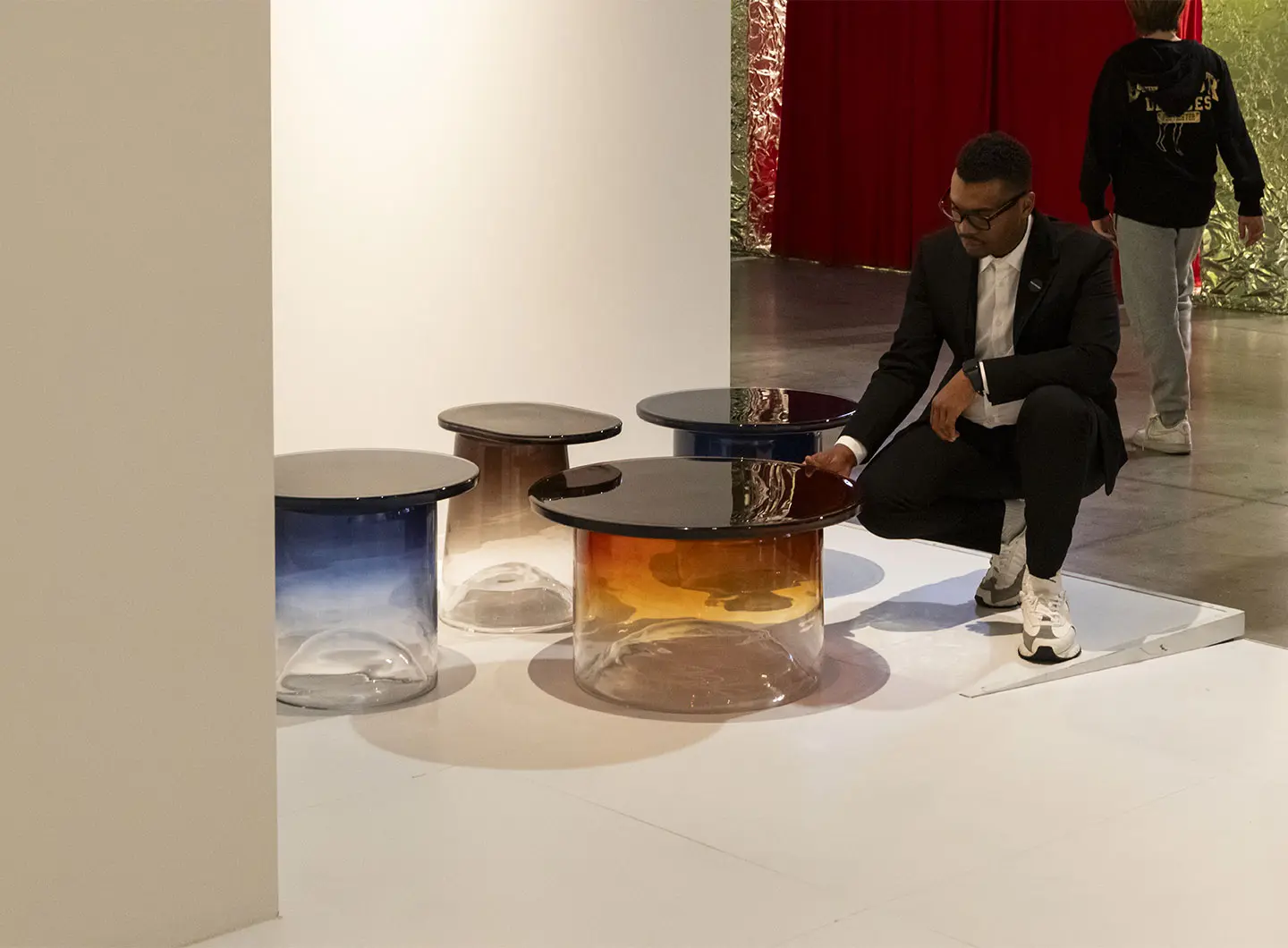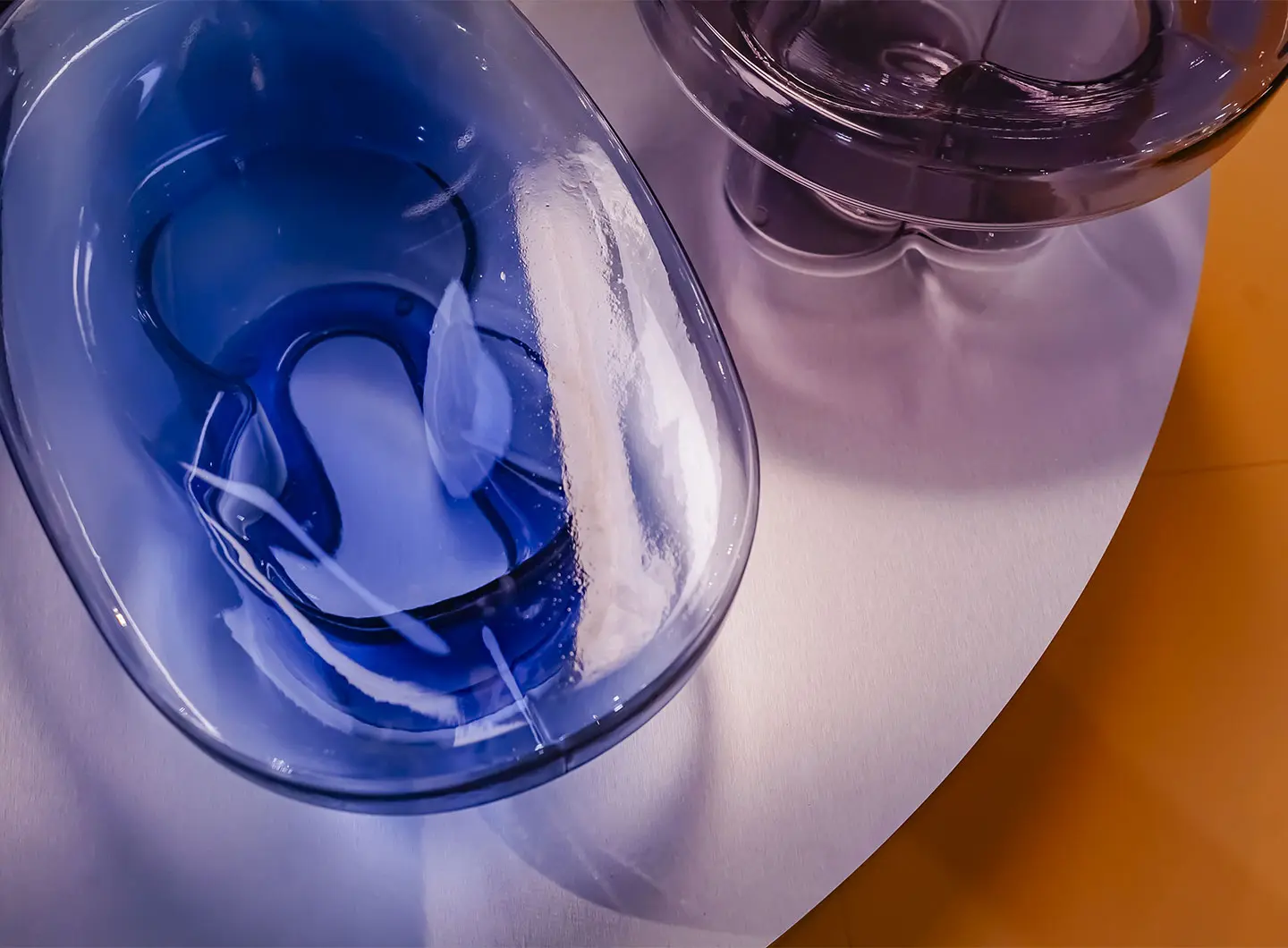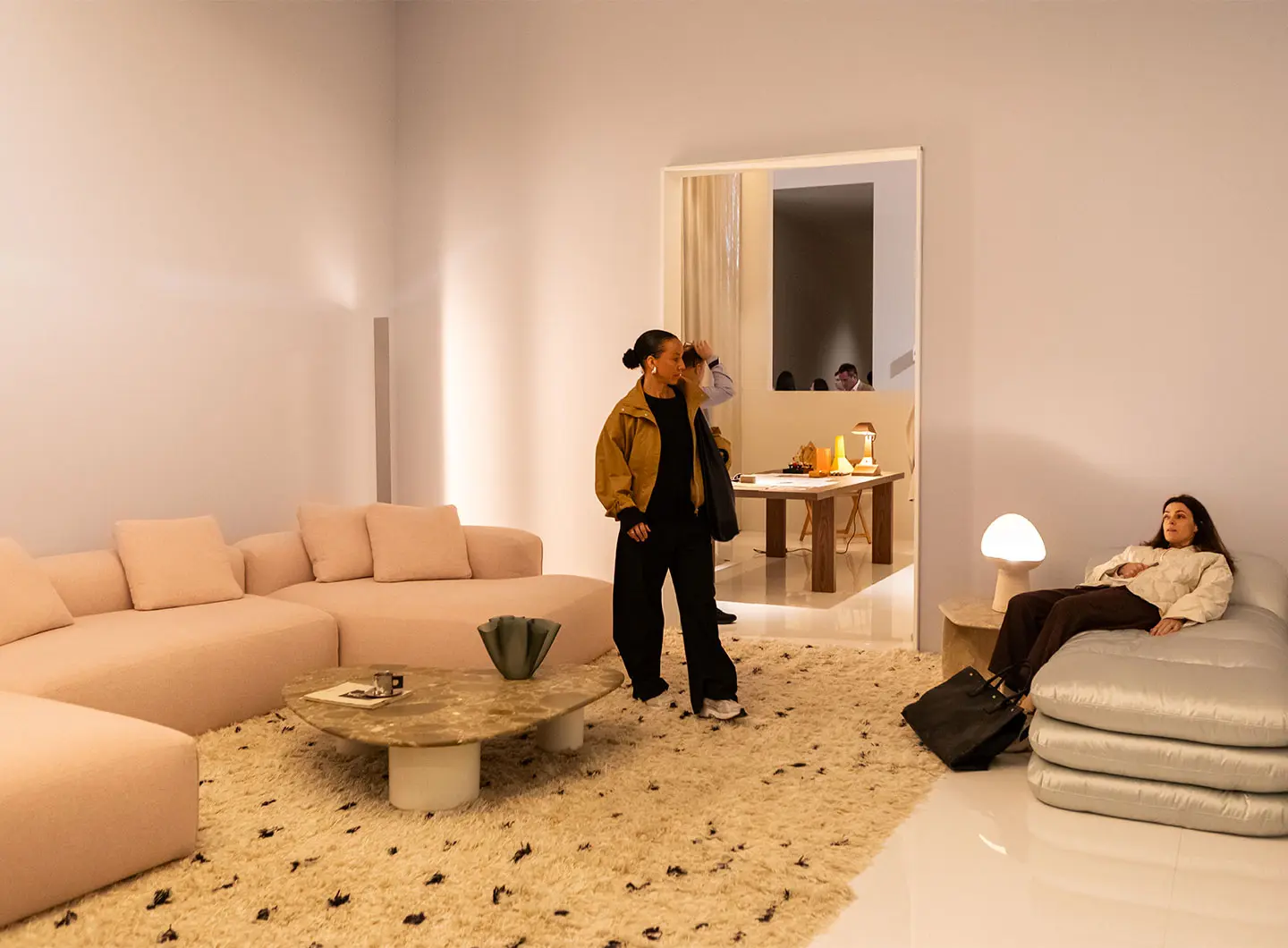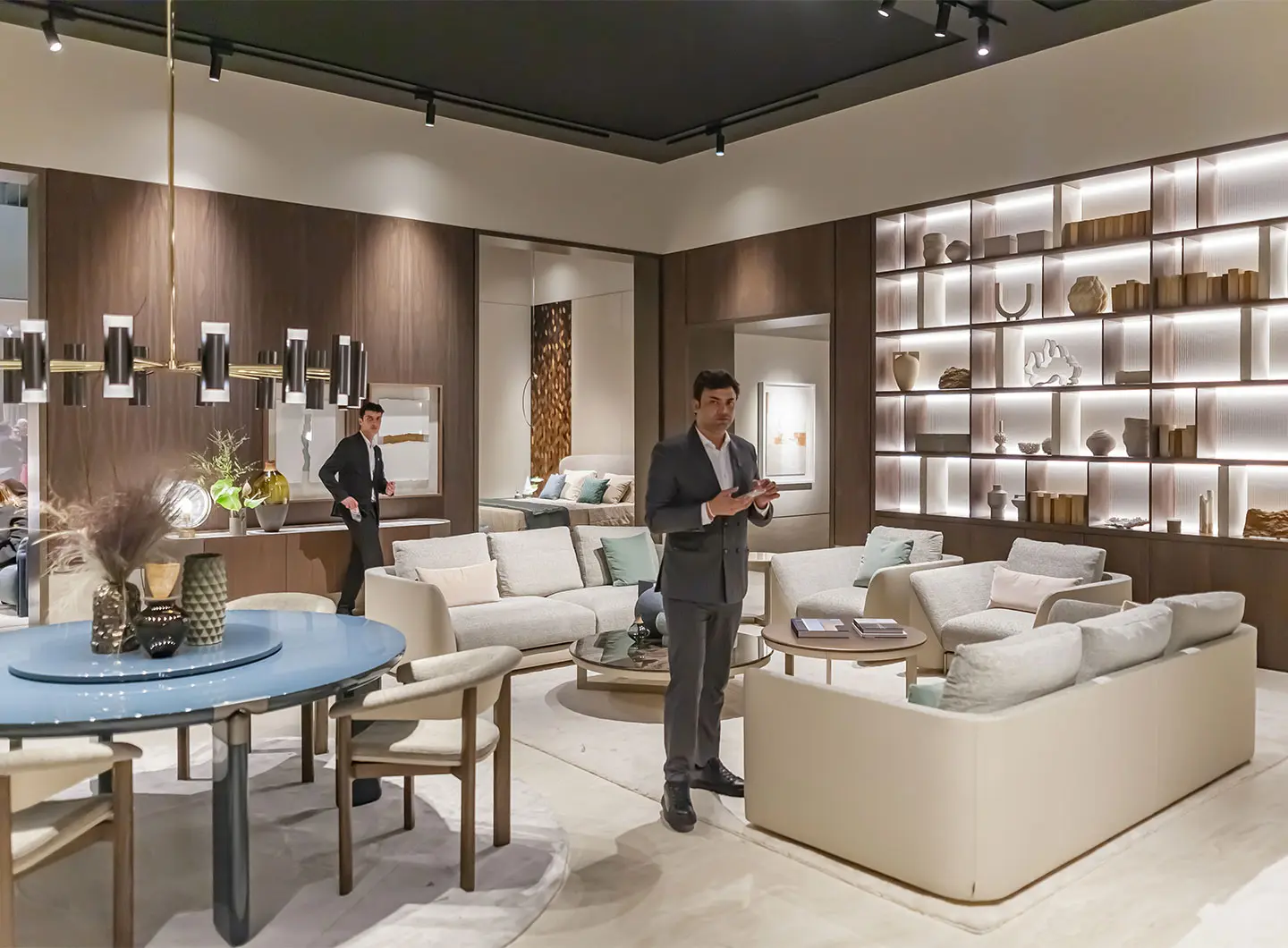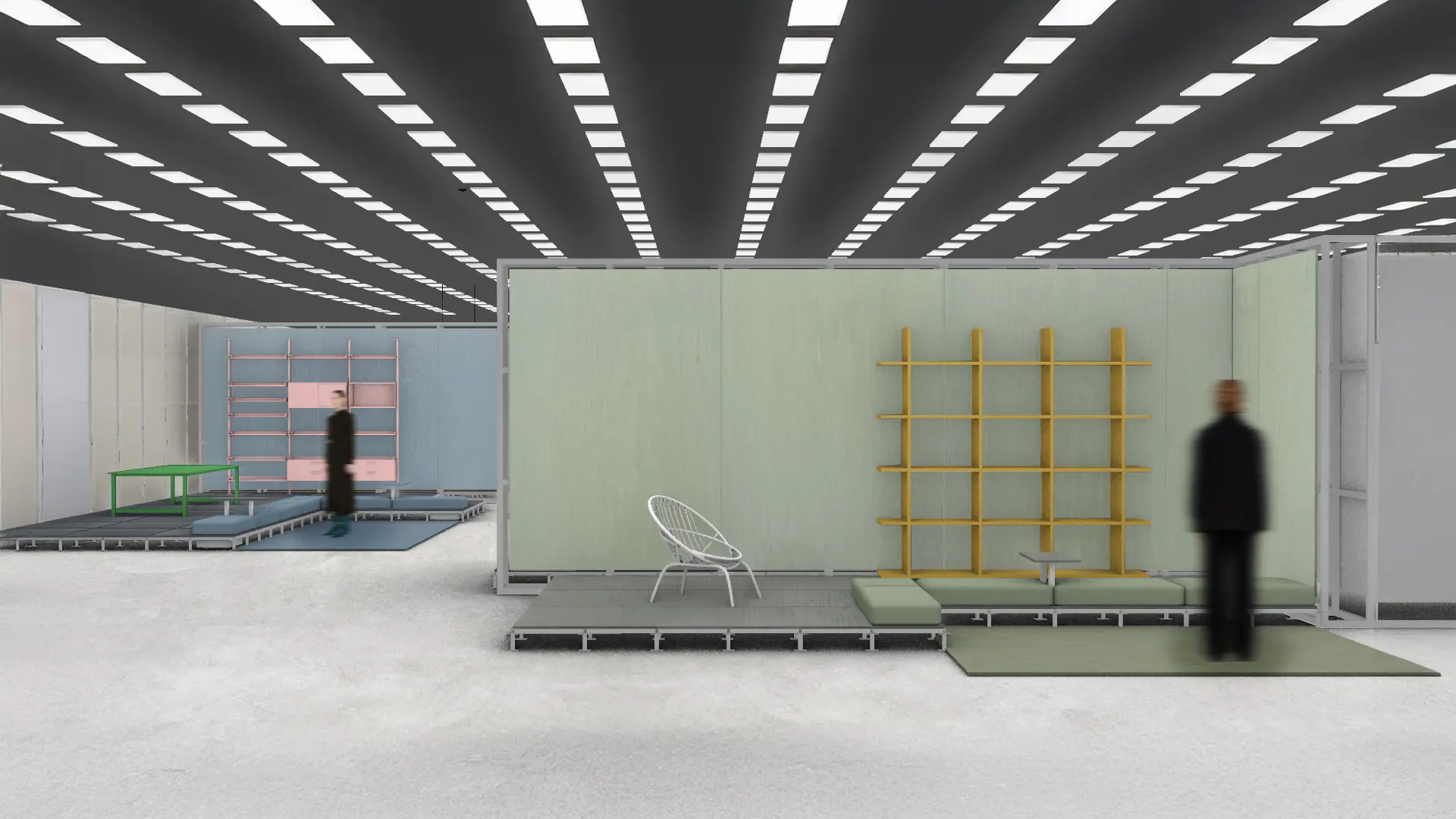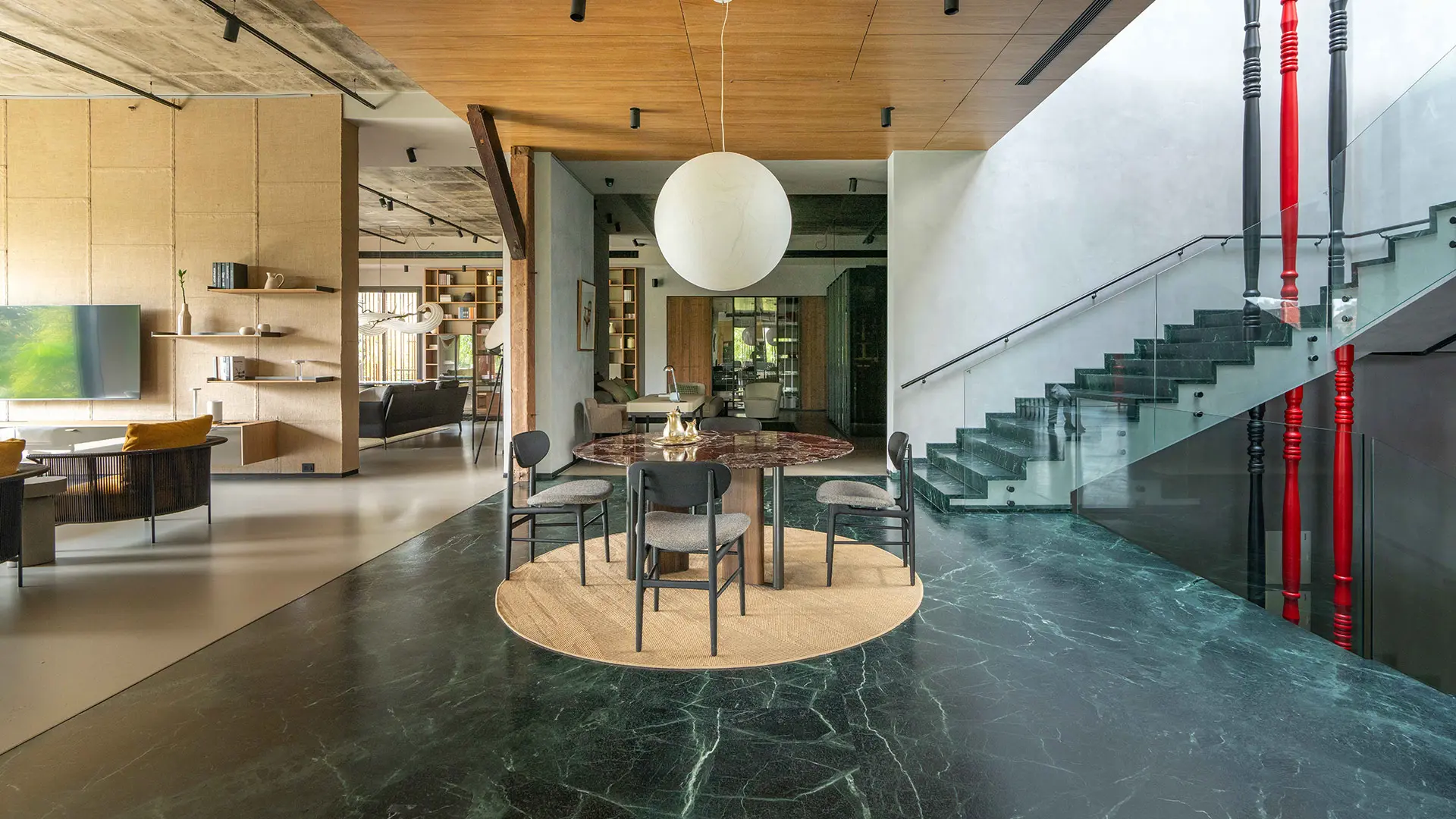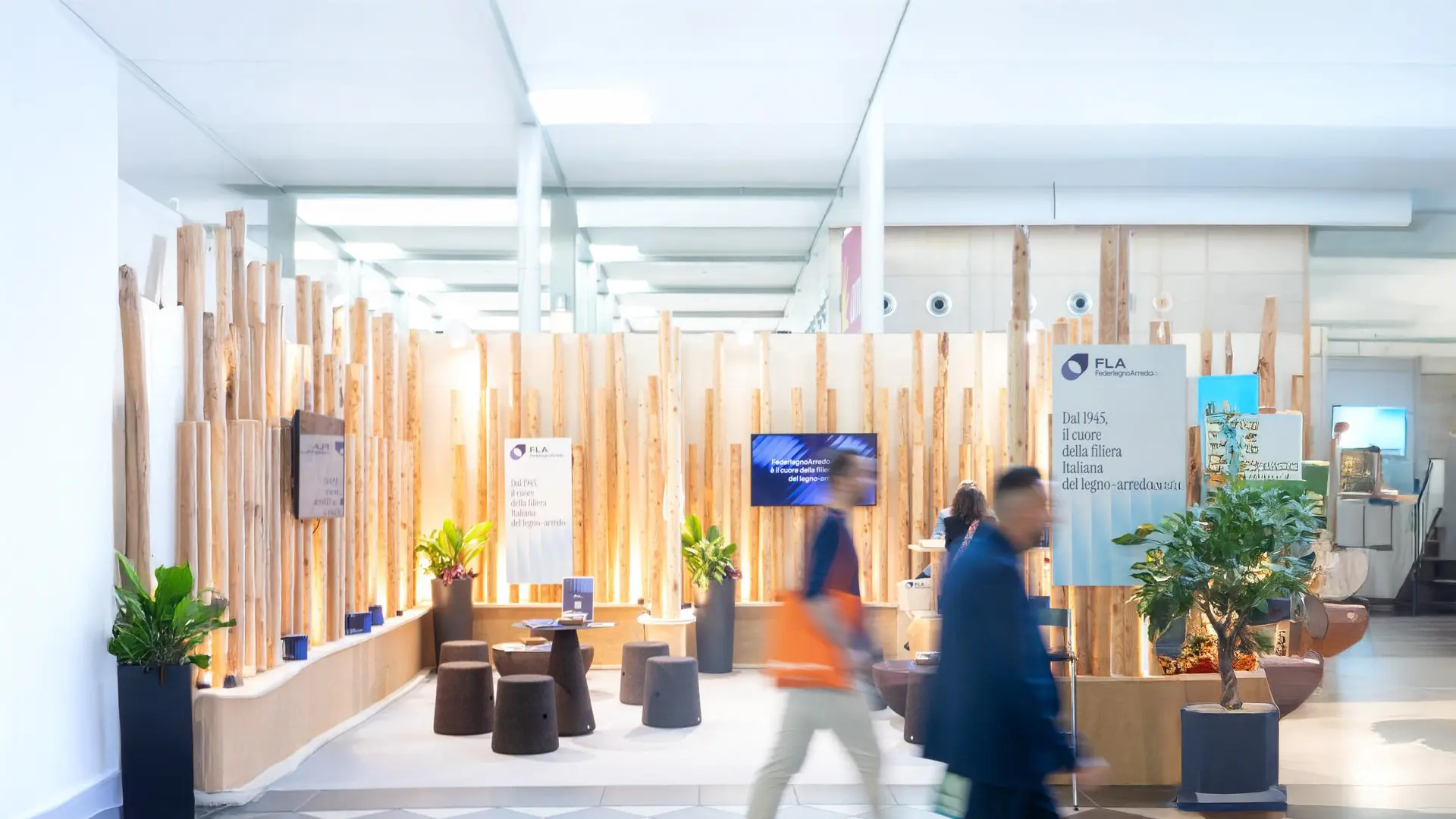Salone Raritas will make its debut at the 64th edition of the trade fair. Curated icons, unique objects, and outsider pieces: the first direct interface between the world of special edition design, antiques and high-end craftsmanship and the professional design market professional design market (architects, interior designers, contractors, developers, dealers, etc). Leading galleries and an international audience will come together on a platform driven by a strong curatorial vision, designed to foster long-term relationships and generate business opportunities.
Modern designer tables, the new pieces seen at the 2025 Salone del Mobile

Porro, Piero Lissoni - Ph. Ruggero Scardigno
Natural and innovative materials, sophisticated design and sustainability awareness are the principles guiding the design of the latest tables. Pieces that leave a mark on the domestic environment, a concrete expression of the companies’ ongoing commitment to research and development
Tables have always played a central role on the domestic scene – they are the place where many of the daily activities take place, from eating and working, right down to the simple pleasure of conviviality. Each year the companies experiment with new design methods, starting with the shapes and continuing with careful research into materials, such as aluminium, wood and glass. Their tables thus become the real protagonists of the living space, thanks to their sculptural aesthetic or minimalist design. From round tables, ideal for conviviality, to square ones, chosen based on the available space, to the classic rectangular ones and even low ones – every solution responds to different needs. Pieces that combine practicality and aesthetics, dispensing with pure formalism in favour of design open to experimentation, always with an eye to the future and to the latest home living trends.
The most stand-out examples include Arte Brotto’s Vero table, made of solid wood, which stems from the juxtaposition of two twin tables fashioned from the noble heart of the same tree trunk, perfectly combined. An object that represents the synthesis of nature of design, thanks to the use of walnut and oak and craftsmanship that enhances their shapes and particularities.
The designer Odo Fioravanti’s InBallo project for Baleri Italia is also interesting, putting the spotlight on sustainability. The table consists of recycled cardboard legs and a metal top, and stands out for its ease of assembly – all the pieces slot together with no need for screws or glues.
Giove from Eforma, designed by Andrea Lucatello, is a marriage of good looks and symbolism. Inspired by the fourth most luminous heavenly body – Jupiter, from which it takes its name – the shape and essence of the table draw on the concepts of prosperity and harmony. Characterised by an extremely eye-catching design, it stands out for its resin-coated painted cement base, which supports a rectangular or shaped top, available in glass, wood, ceramic and marble. The King version is notable for the round lacquered edge, which wraps around the entire surface of the ceramic top.
The Ice Tables collection of small tables designed by Daniel Germani for Maxdesign, and made from sought-after Murano glass, plays with transparencies. Each piece changes as the light and perspectives shift, projecting reflections and shadows that bring dynamism and depth to the space. Harnessing a process rooted in the ancient tradition of Murano glassmaking, each table is a unique piece. “Working with glass is magical. Every time the molten glass takes shape, it’s pure bliss. It’s a perfectly imperfect process, in which the master glassblower’s art shines through every unique piece,” says Germani. Ice Tables comes in three different colours – cobalt blue, amber and smoked – and in three different sizes.
Soda by Miniforms also plays on the transparency of the material. Characterised by an elongated shape, it has a smooth base that recalls the fluidity and elegance of French design of the Fifties. Fascinating as a stand-alone piece, Soda best expresses its playful soul in compositions, where it breaks the static nature of the forms and animates the space with visual lightness.
Designed by Studiopepe and inspired by the rationalist architecture of Lina Bo Bardi — the red background to the iconic apertures on the SESC Pompeia in São Paulo in particular — Gian & Pan by Tacchini Italia Forniture is a collection of coffee tables that mixes materials and colours to enhance the irregular shapes of the tops. Marble and concrete merge into organic and sinuous structures, creating unexpected contrasts and fascinating plays of light and matter. The coffee tables are freely modular: the top comes in three different varieties of marble, featuring different shades and veins, while the polished concrete legs are available in three colour choices.
The Kenobi Table by Marco Acerbis for Turri, who this year turns 100 years, on the other hand, explores the balance between the opposing forces of the material, combining structural solidity with a surprising visual lightness. The slender legs, which seem to barely touch the top, make for a sense of suspension that contrasts with the robustness of the whole. The connection point between base and surface is transformed into a distinctive sign: a perfectly integrated metal joint, an expression of precision craftsmanship and attention to detail. Kenobi is available in two configurations: round and rectangular.
The Ventiquattro table, designed by Piero Lissoni for Porro, celebrates the essentiality and purity of the lines. The protagonist of the composition is the rectangular top in extra-clear glass with rounded edges, which leaves visible the underlying welded tubular metal structure, available in different colour finishes. Inspired by the frame of a bicycle or motorcycle, the supporting structure is composed of a double stand joined by two chains, evoking the base of a building. An exercise in aesthetic engineering that takes the concept of structure to the limit, while ensuring great solidity even in generous lengths.
Amorphous shapes and a fluid aesthetic define the Lymph table by Naturedesign. The structure stands out for its sculptural legs, available in wood or marble, while the top is available in marble, wood or ceramic. The design plays on the artistic-decorative expectation, thanks to the multiple customisable combinations of bases and surfaces, making each piece unique and seamlessly integrable into different contexts.
Material is at the heart of designer Jonathan Muecke's creative process, and the Muecke Wood table, designed for Knoll, is a clear example of this. For this collection he chose wood, a common, warm material, appreciated for its natural qualities and for the grain that makes each piece unique. Muecke handcrafted an extensive series of prototypes to develop the collection, reflecting his methodical and experimental approach. As in his artistic practice, here too he explores the stabilising effects of repetition, a principle that guides many of his design choices. A note pinned on his studio desk sums up this philosophy: "Repetition allows an object to be found in as few decisions as possible."


 Exhibitions
Exhibitions

